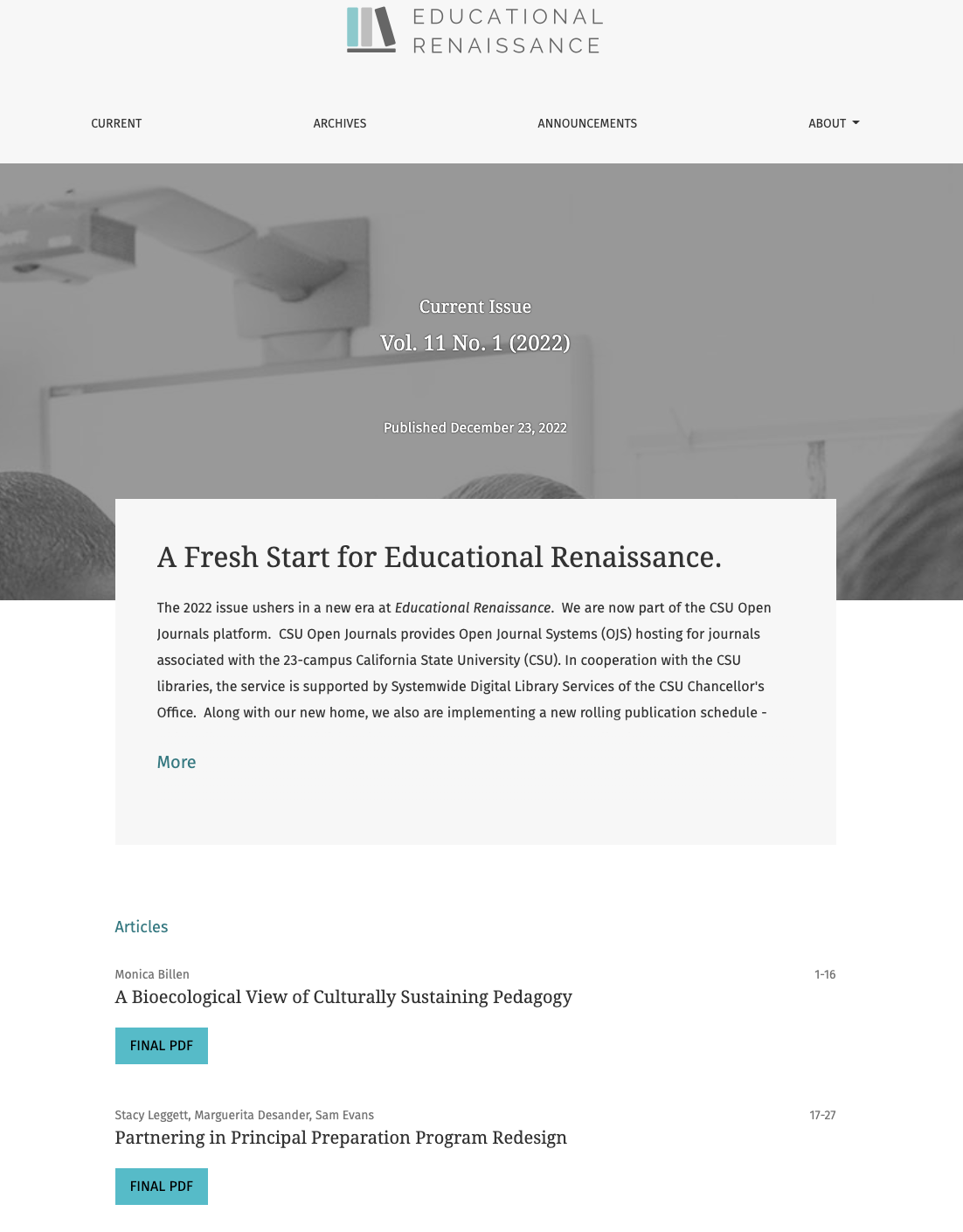Abstract
This article provides an example of how a television station and a teacher education program located at the University of Central Missouri partnered to provide on-air lessons for kindergarten through fifth grade lessons to respond to the academic need due to the school shutdowns in spring 2020 because of COVID-19. The article highlights how three teacher candidates who were completing their student teaching semester were invited by the curriculum director of KMOS Summer Classroom to plan lessons to teach on- air. The curriculum director of KMOS Summer discusses the process of selecting the candidates and planning the lessons. The KMOS Summer Classroom perceptions of this project prepared them for their first year of teaching. Successes of KMOS Summer Classroom are highlighted along with next steps for implementation of KMOS Summer Classroom 2.0. This article aims to share an experience other teacher education programs can consider when reaching their surrounding communities during a crisis or pandemic.
References
Alsaadi, N. S. M. & Atar, C. (2019). Wait-time in material and classroom context modes. International Journal of Contemporary Educational Research, 6(1), 53-69. DOI: https://doi.org/10.33200/ijcer.542495.
Beyer, C.J. & Davis, E. A. (2009). The role of preservice elementary teachers pedagogical content knowledge for science teaching in learning to engage in curricular planning. A paper presented at the April 2009 annual meeting of the National Association for Research in Science Teaching, Garden Grove, CA. Retrieved from http://websites.umich.edu/~hiceweb/PDFs/9.doc (umich.edu).
Brown, M. W. (2011). The teacher–tool relationship: Theorizing the design and use of curriculum materials. In J. T. Remillard, B. A. Herbel-Eisenmann, & G. M.Lloyd (Eds.), Mathematics teachers at work: Connecting curriculum materials and classroom instruction (pp. 17–36). New York, NY: Routledge.
Darling-Hammond, L., Schachner, A., & Edgerton, A. K. (with Badrinarayan, A.,Cardichon, J., Cookson, P. W., Jr., Griffith, M., Klevan, S., Maier, A., Martinez, M., Melnick, H., Truong, N., Wojcikiewicz, S.). (2020). Restarting and reinventing school: Learning in the time of COVID and beyond. Palo Alto, CA: Learning Policy Institute.
Diemer, A & Park, A. (2022). The impact of rural and urban school reopening on Missouri Students. Urban Institute. https://www.urban.org.
Education Week (2021). Map: Coronavirus and school closures in 2019-2020. http://www.edweek.org.
Office for Civil Rights (2021). Education in a pandemic: the disparate impacts of COVID-19 on america’s students. Retrieved from: Education in a Pandemic: The Disparate Impacts of COVID-19 on America’s Students (PDF).
Santoyo, C. & Zhang, S. (2016). Secondary teacher candidates’ lesson planning learning. Teacher Education Quarterly, 43(2), 3-27
Renaissance Learning (2022). How kids are performing: tracking the midyear impact of COVID-19 on reading and mathematics achievement, at 20(2021). https://www.renaissance.com/how-kids-are-performing.
United Nations Educational, Scientific, and Cultural Organization. (2019). COVID-19 Educational Disruption and Response. https://en.unesco.org/covid19/educationresponse.

